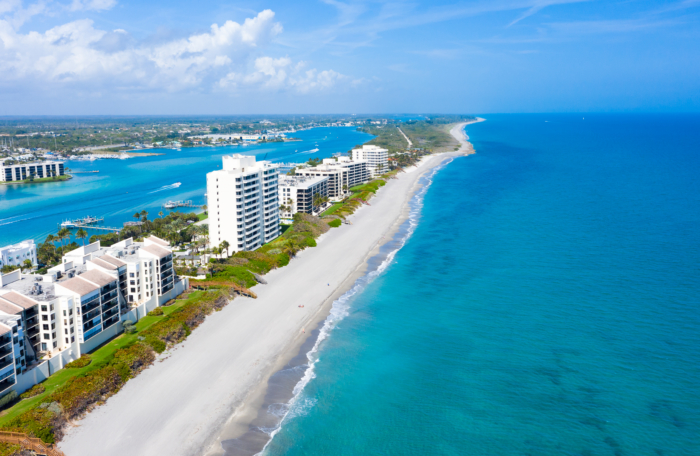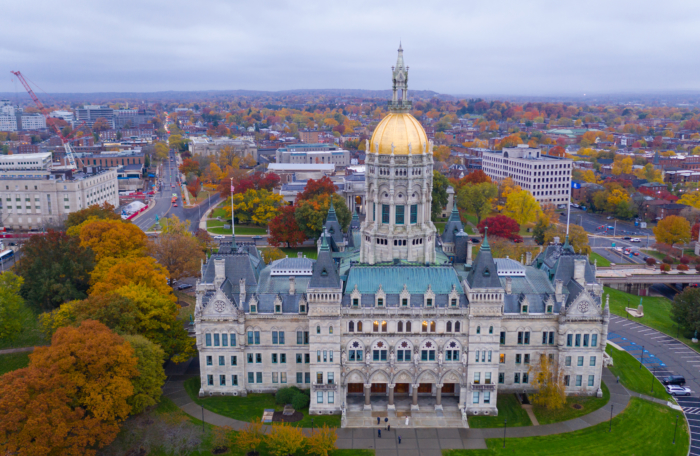New Hampshire’s view of national politics is distorted by the presidential primary. The distortion is so strong that sometimes we fail to see broader national trends until they become part of a narrower story about presidential ambitions.
Gov. Chris Sununu’s 2023 inaugural address is a perfect example. The speech stands on its own as a statement of what we might call New Hampshire exceptionalism.
“Over the last six years, New Hampshire has become an island of freedom surrounded by highly taxed, highly regulated states.
“We are a harbor for citizens fleeing the states they once called home in pursuit of our Live Free or Die way of life.
“We continue to open up doors of opportunity, giving families the freedom to choose the path that best suits their needs.
“We have provided leadership that puts ‘The Individual’ ahead of ‘The System.’ Ensuring that everyone — regardless of income, gender, race, or religion – has the same opportunities to succeed.”
The speech drew immediate comparisons with Florida Gov. Ron DeSantis’ 2023 inaugural address, delivered two days before.
Both governors cited studies that rated their states high in measures of economic and personal freedom, and quality of life. Both portrayed their states as refuges for free people fleeing the grip of heavy-handed government in neighboring provinces.
DeSantis and Sununu are being discussed as potential rivals for the 2024 Republican presidential nomination. So the similarities in their speeches were taken by many as evidence of their ambitions.
There’s obvious merit to such observations. And yet presidential ambition can’t entirely explain these speeches. Something larger — and more important — is at work here.
Governors listing their state’s accolades is nothing new. Maggie Hassan touted New Hampshire’s national rankings in her 2013 inaugural address. What’s most noteworthy this year is how similar Florida’s and New Hampshire’s ratings are.
As we’ve written before, Florida and New Hampshire have become rivals for the top spot in the Fraser Institute’s Economic Freedom in North America report. (In 2021, New Hampshire ranked No. 1, Florida No. 2. They switched places in 2022.)
That’s not an accident. Florida’s elected officials have spent many years striving to improve their state’s economic position relative to rivals such as New Hampshire, Texas, Tennessee and North Carolina.
This is how Rick Scott began his inaugural address in 2011:
“We gather today to talk about Florida’s future.
“To assess where we are . . .
“To define where we want to go . . .
“And to plan how to get there.
“Clear goals and hard work can achieve amazing things.
“The giant oak trees that surround us here
“ARE what they ARE
“Because acorns had a plan.
“Once we take the right steps, I am absolutely convinced that Florida will become the most exciting place in the world to live and work.
“Let’s begin by facing squarely the challenge of our time-a stalled economy.”
Scott said moments later, “job creation is a MISSION.”
He proposed to cut taxes and regulations, reform the bureaucracy, and expand educational opportunities.
Four years later, in his 2015 inaugural address, he touted the 700,000 jobs Floridians had created.
National rankings of the kind Sununu and DeSantis cited are metrics by which governors increasingly finding themselves measured — by themselves, their rivals and voters.
It’s difficult to say how much these rankings guide governors and legislators. As college rankings have been shown to influence university administrations, it’s likely that these now constant state rankings do help to shape policy.
And they appear to be focusing state leaders on policies that stimulate economic growth, and for good reason. Policies that lead to growth lead to better economic and social outcomes, which then lead to higher rankings.
Economic growth creates jobs, raises incomes and improves health and well-being. As Veronique de Rugy wrote last week:
The economy grew at an average of 3.5% between 1950 and 2000. Since 2000, that rate has slowed to 1.7%. The cost of lower growth is real. John Cochrane does the math for us: “If the U.S. economy had grown at 2% rather than 3.5% since 1950, income per person by 2000 would have been $23,000 not $50,000.”
What policy other than economic growth has the power to double the average American’s living standard in a generation? None. And here’s the cherry on top: All the stuff an advocate anywhere on the political spectrum claims to value—good health, clean environment, safety, families and quality of life—depends on higher growth.
Faster economic growth is likely to engender even greater benefits for the bottom 50% of the income distribution, which contains young people just starting their careers, retirees trying to stretch their fixed incomes with part-time work, and those populations that are caught in intergenerational cycles of poverty. And this is true everywhere in the world. As Harvard University’s Dani Rodrik rightly sums up, “Historically nothing has worked better than economic growth in enabling societies to improve the life chances of their members, including those at the very bottom.”
Governors have caught on. Because they want to end their terms with wealthier, happier people, they’ve become more aggressive in their pursuit of growth-focused economic policies.
In his 2015 inaugural address, Arkansas Gov. Asa Hutchinson proposed cutting taxes and improving public education to “compete and win in this global marketplace.”
In his 2021 State of the State address, Texas Gov. Greg Abbott boasted of his state’s top national rankings and said the government had a duty to “keep Texas the freedom capital of America.”
Even governors of states that are losing population and businesses are finding ways to claim the title of most free state. California Gov. Gavin Newsom last week claimed his was the “true freedom state.”
In some states, legislators are leading the way. Last year, North Carolina celebrated its CNBC ranking as “America’s top state for business” after a decade-long push to reform the tax code helped create “the nation’s strongest economy.”
The big story here is not the 2024 presidential primary. It’s that state-level elected officials, particularly governors, are thinking an acting as if they’re engaged in a national competition to achieve the greatest economic, educational and social welfare gains for their populations.
They’re pursuing not just results, but results that can be measured.
In that pursuit, they’ve learned that creating a climate conducive to economic growth produces the best results.
New Hampshire learned this decades ago. Our growth-based policies created the New Hampshire Advantage, which made us the economic marvel of New England.
Now that so many others have caught on, New Hampshire can’t afford to slack off. Being an island of liberty in the Northeast has dramatically improved our quality of life here. But the field of competition has expanded well beyond New England.
States all over the country are working every day to lure our young people and poach our businesses. If we stop pushing for competitive advantages by keeping taxes low, improving educational opportunities, budgeting more efficiently, and removing barriers to entrepreneurship and economic opportunity, we risk undoing the massive gains we’ve made since the middle of the last century.
It’s a mistake to view the Sununu and DeSantis inaugural addresses purely through the lens of the presidential primary.
These governors have become part of the presidential conversation because of their policy successes. And those successes are rooted in an older, ongoing competition among many states (often led by governors) to improve measurable outcomes for their residents.
That ongoing, and progressively more intense, competition is the bigger story.










